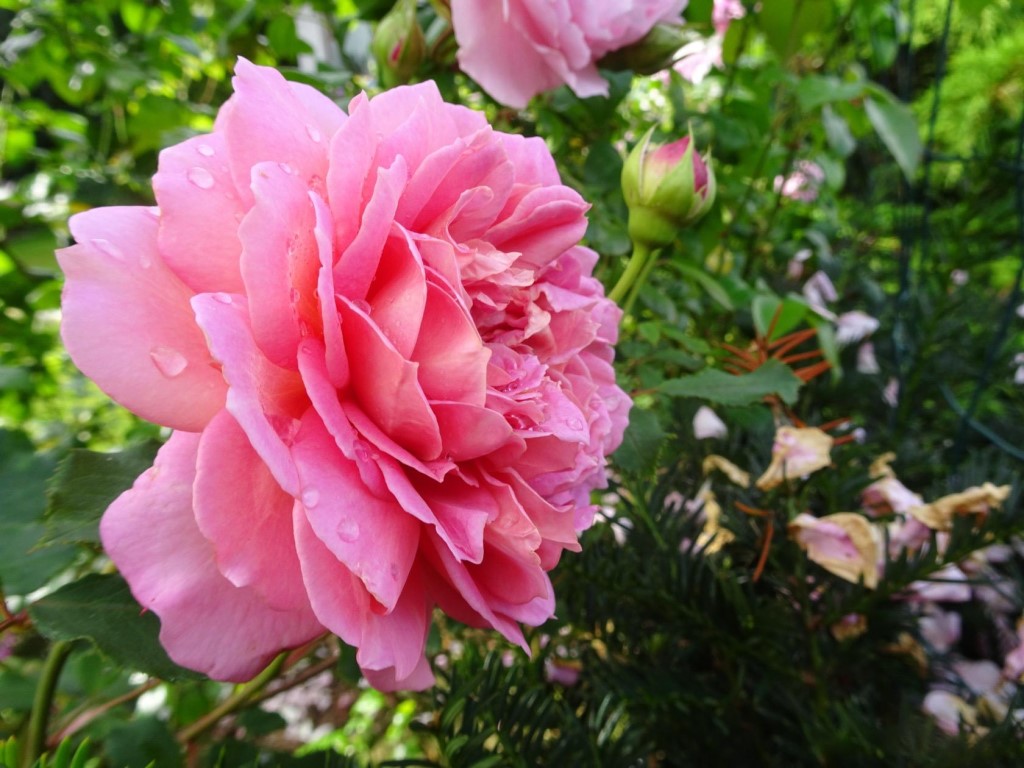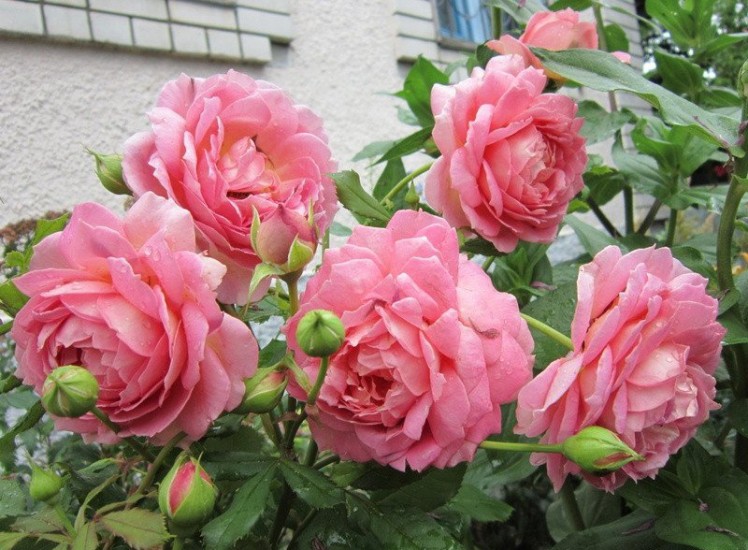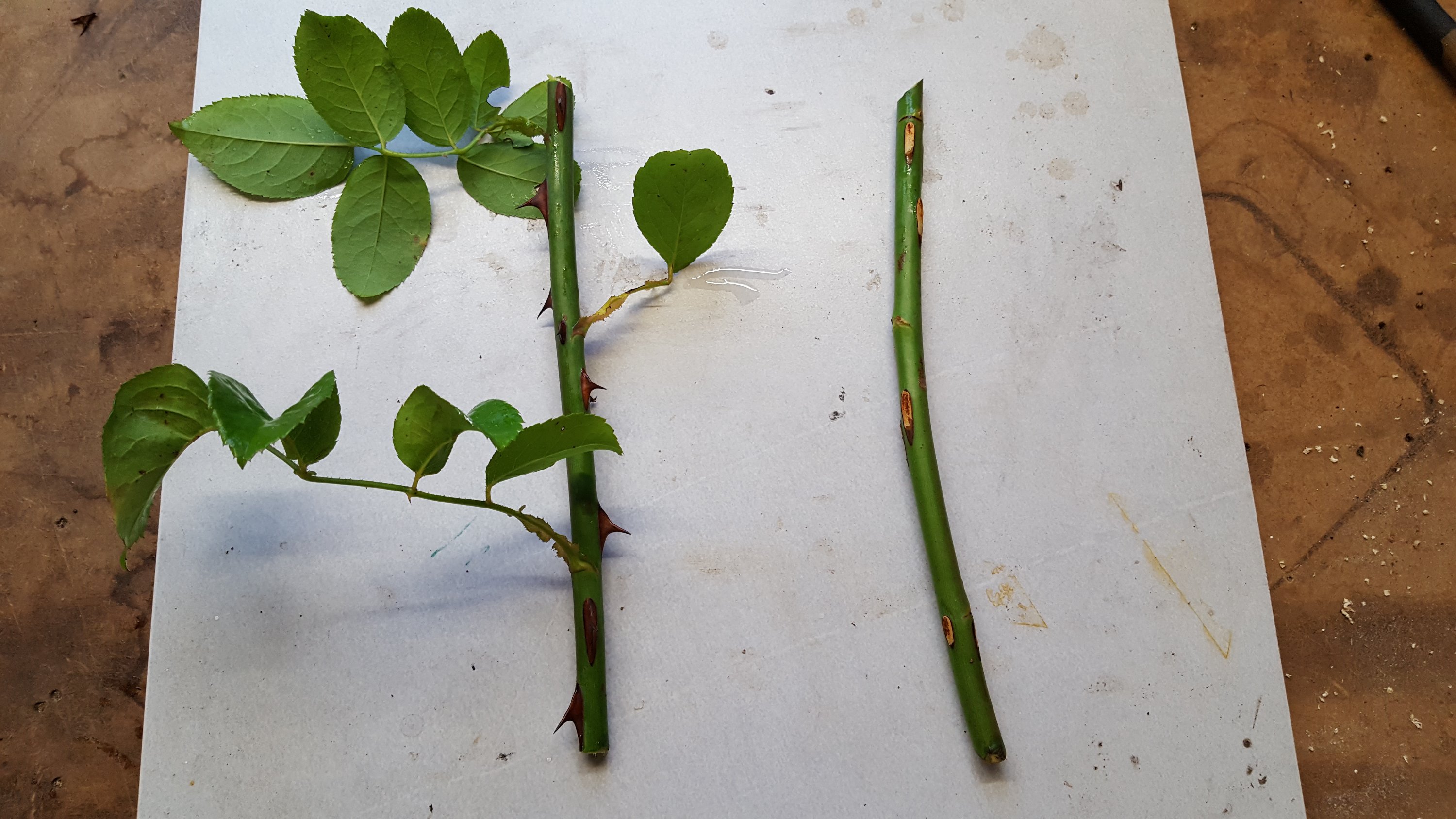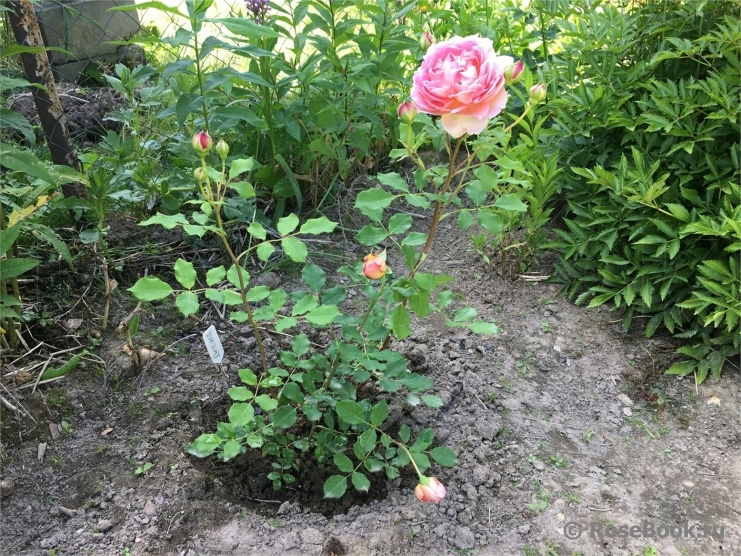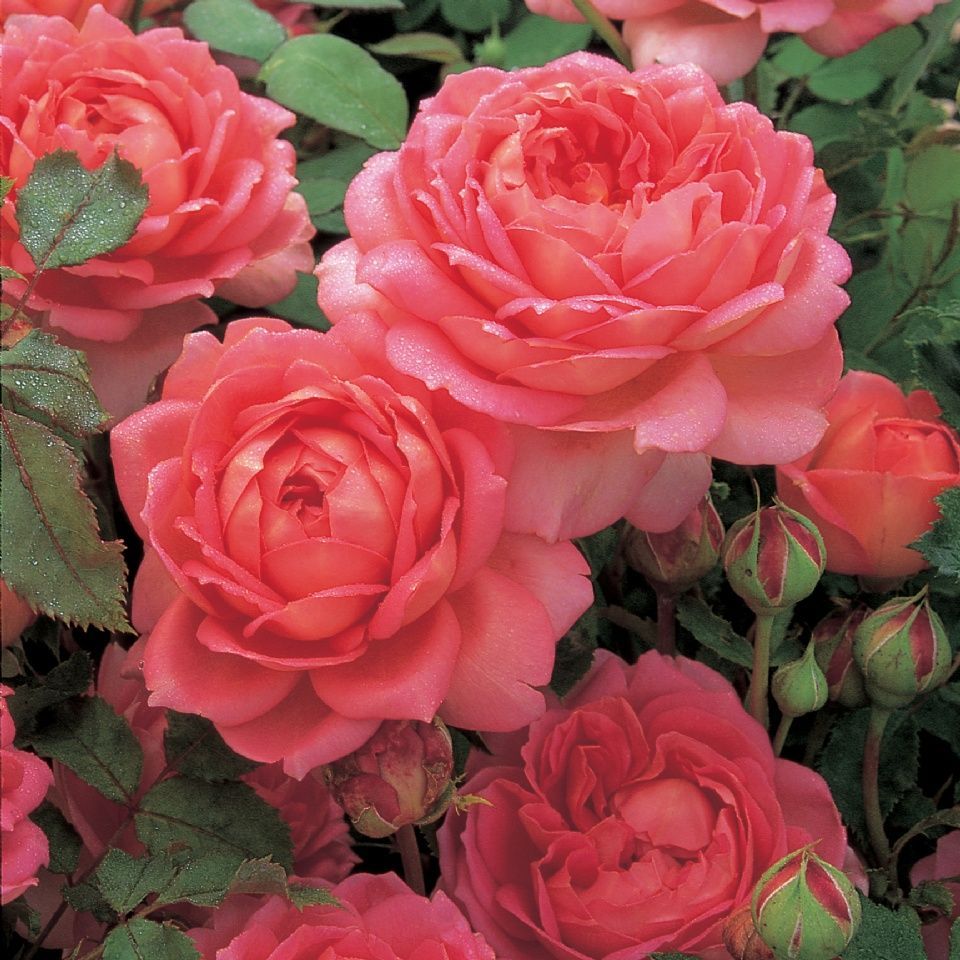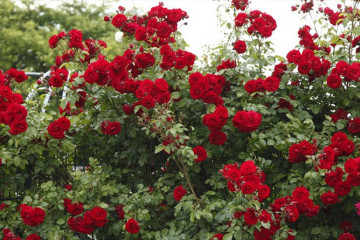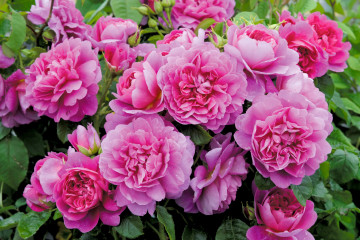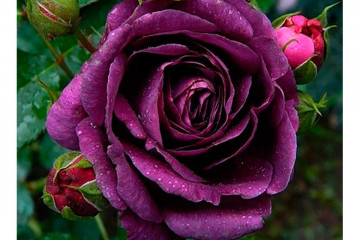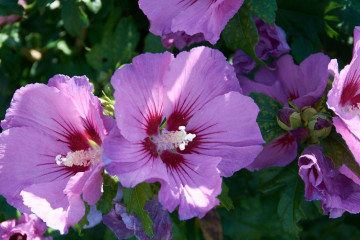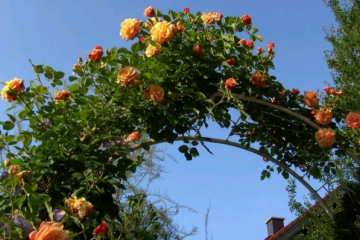Rose Jubilee Celebration - growing Ostinka
Content:
- Rose Jubilee Celebration
- Brief description, characteristic
- Advantages and disadvantages of the variety
- Use in landscape design
- Growing a flower: how to plant it in open ground
- In what form is the landing
- What time is the boarding
- Location selection
- How to prepare the soil and flower for planting
- Planting procedure step by step
- Plant care
- Blooming rose
- Flower propagation
- Diseases, pests and ways to control them
The abundant and generous bloom of the Jubilee Celebration rose makes it, rightfully recognized as the most beautiful of David Austin's roses, enjoys extraordinary popularity. And this applies not only to the British, but also to gardeners around the world.
Rose Jubilee Celebration
Rose Jubilee Celebration belongs to varietal English roses. The name of the rose was given to the anniversary date of Elizabeth II - the Queen of England, her 50th birthday. The variety was bred in 2002 by breeder David Austin, whose rose nursery is known throughout the world. Austin was born into a farming family in 1926. He has been engaged in flower breeding since his youth.
His goal was to bring out roses with large flowers, while retaining the ancient shape. The effect of re-blooming was also important for David. He did not immediately achieve success, conservatism did not allow the public to immediately appreciate his brainchild.
The flower received universal recognition only in 1983. Rose English park Jubilee Celebration as a selection novelty began to appear in 1998 and received recognition after 4 years. Today the whole world appreciates this variety. In addition, these flowers are relatively unpretentious. Now the territory of the David Austin nursery is called not just a platform for the cultivation of various rose cultures, but a real museum, which must be visited with excursions. The nursery houses sculptures, gazebos, and equipped reservoirs.
Brief description, characteristic
The densely double flowers of the Jubilee shrub rose have from 90 to 100 petals located on the peduncle (from 1 to 3). Flowers 6-7 cm in diameter are salmon pink with a delicate shade of golden yellow. Mature large glossy foliage is medium green, young foliage is red.
The plant is re-flowering. Dimensions 120 x 120 cm (height, width). It has a wonderful fruity aroma with raspberry and lemon notes. Withstands frosts down to -23 ° С (6th zone of winter hardiness).
Advantages and disadvantages of the variety
Like every other bush rose, the English park Jubilee Celebration has both advantages and disadvantages.
The advantages of the variety include the following points:
- tolerates winter well;
- spectacular appearance and color of buds;
- the rounded shape of the bush does not require shaping;
- high aesthetic qualities of the bush;
- a specific mutating aroma that is heard 2 meters from the bush;
- almost continuous profuse flowering;
- good resistance to insects - rose aphids, caterpillars and others.
But, unfortunately, the bush also has disadvantages:
- buds sensitive to moisture and dampness droop or fall off during the rain;
- in the first year after planting, the shoots are weak;
- bushes are prone to fading;
- with sharp jumps in temperature, the bush may freeze slightly;
- slow growth of the bush;
- on young bushes, the buds look down;
- there is practically no immunity to black spot.
Use in landscape design
Solitaire plantings best of all convey the grace of an aristocratic bush rose.
Looks great in groups. It looks best next to evergreen conifers or cereals. This is facilitated by the harmony of soft pink buds and coniferous branches. Most often, Jubilees are planted in landscape mixborders in the style of English landscape, country or exquisite Art Nouveau.
Growing a flower: how to plant it in open ground
Unpretentious in care, it is available for growing and inexperienced gardeners. The main thing is to follow the basic rules of agricultural technology for this shrub.
In what form is the landing
In order for the bush rose to retain all the characteristics of the variety, it should be propagated vegetatively, by seedlings (cuttings). They are cut after the first flowering of mature, mature flowers.
What time is the boarding
The planting of Jubilee Celebration shrub roses in the middle lane and in more northern regions begins in the spring (April-May). Autumn planting is also allowed. But here you need to take into account the tight deadlines, since the plant must have time to take root.
Location selection
The spectacular appearance of a bush rose suggests a choice of the most viewed garden plots. This allows you to admire the plant from any angle.
The place should warm up well and be illuminated by the sun's rays. It is advisable to choose areas with an afternoon shade. Otherwise, burns of foliage and burnout of buds are possible. Do not plant in the wind, in drafts and in places where cold air stagnates.
How to prepare the soil and flower for planting
The rose is planted in 60-centimeter holes with drainage laid out on the bottom. As it is possible to use:
- small pebbles;
- gravel or crushed stone.
Before planting, the seedlings are soaked in a solution of "Heteroaukin", which stimulates the growth of the root system. Treated plants take root quickly and are easier to plant. If the root system is too long or damaged, the excess roots are cut with pruning shears.
Planting procedure step by step
If a rose bush has an open root system, it must be planted together:
- one person sets the root collar (the place where the rose is planted) so that it is 3 cm below the surface;
- the second gardener spreads the roots, sprinkles them with earth and compacts the loose soil;
- after compaction, the root collar should be above ground level.
This planting allows many additional stems to grow. The planted bush is watered directly under the root. The settled earth is poured, and the soil itself is mulched with peat.
Plant care
Based on the fact that the birthplace of the Jubilee rose is England, which does not differ in a particularly favorable climate, in order for the shrub to please with its beauty, it is necessary to take into account some requirements.
Watering rules and humidity
The roses are properly watered weekly. The gap can be slightly larger or smaller, depending on the drying out of the soil under the bush. It is not recommended to overmoisten the bush. This can lead to the death of shoots drying out from excessive moisture.
For watering one bush, about 15 liters of water is enough. When watering, you need to ensure that the water completely soaks the root ball. After watering the plant, you need to gently loosen the soil.
Top dressing and soil quality
Grows best on fertile loams. You can prepare a soil mixture, which includes one to one:
- fertile garden land;
- peat .
It is also recommended to add 3 handfuls of bone meal to the mixture.
Pruning and replanting
Cut the rose in early spring, as soon as the first buds swelling at the bottom of the bush were noticed. At the same time, if necessary, the bushes are transplanted, observing the same rules as when planting seedlings.
There are no special technologies for pruning and transplanting. The bush can be formed at will. This is what made this rose the queen of hedges.
Cutting the bush, remove diseased and frozen shoots and those shoots whose growth direction goes deeper into the bush.
Features of wintering a flower
The rose needs protection from frost, but there is no need to rush to cover the flower, otherwise it may vanish. With the onset of stable cold weather with an air temperature below −7 ° C, cut roses are covered with spruce branches, and the base of the bush is sprinkled with a layer of earth. Lapnik is laid on top of plants, and some gardeners recommend placing it between shoots.
In March-April, the roses begin to gradually air, and only after the plant gets used to the air temperature, they open completely.
Blooming rose
Despite the fact that David Austin spoke about two waves of blooming of his roses, the flower surpassed all expectations and blooms "in three waves". At the same time, the flowering activity is so high that the rose seems to be blooming continuously.
A period of activity and rest
From May to September, the plant is active, at rest, the rose begins to gradually prepare in early autumn, gradually reducing watering. Then, with the onset of cold weather, the bush is covered and sent to winter.
Care during and after flowering
During flowering, the Jubilee Celebration rose is watered abundantly as the soil dries. After flowering, the rose requires a reduction in watering and preparation for wintering. Also, the flower requires fertilization. Fertilize seasonally:
- in the spring - with nitrogen;
- in the summer - potassium and phosphorus.
What to do if it does not bloom, possible reasons
If the rose does not please with flowering, you should take a closer look at the conditions in which it grows. The lack of flowering can be attributed to both lack of moisture and lack of sunlight.
Flower propagation
In order to preserve all varietal characteristics, the plant is propagated exclusively vegetatively. Cuttings are cut from mature, mature plants. It is advisable to carry out the procedure after the first wave of flowering.
When is it produced
Given that the first wave of flowering occurs in late spring and early summer, cuttings are cut in June-July.
Detailed description
Roses are cut as follows:
- choose adult shoots (thickness at least 4 mm);
- the shoot is cut into pieces, making sure that each of them has from 3 to 5 buds;
- the upper cuts are made straight, and the lower ones oblique (so as not to be confused with which part to plant the cutting);
- work is done with a sharp knife, treated with alcohol and rinsed with boiling water;
- the upper sections are made 2 cm above the location of the upper kidney, the lower ones are made just below the lower one.
If the planting of the cutting is planned immediately after pruning, a couple of leaves are left on the cutting (except for the lower ones, which must be cut off).
Diseases, pests and ways to control them
Despite the resistance of the Jubilee Celebration rose to pests and diseases, it happens that the plant is sick. In this case, processing it with special preparations is required.
- from spider mites - Iskra-M and Fufanon;
- from green aphids - “Confidorom”, “Iskra-M”, “Iskra Double Effect”, “Bison” and “Tanrek”;
- from the nut-making - "Lightning".
Rose Jubilee Celebration will be a decoration of the garden, but in return will require careful maintenance. In order for a plant to reach its full flowering potential and look healthy, it needs to be looked after. The above information will help to cope with caring for a rose.

